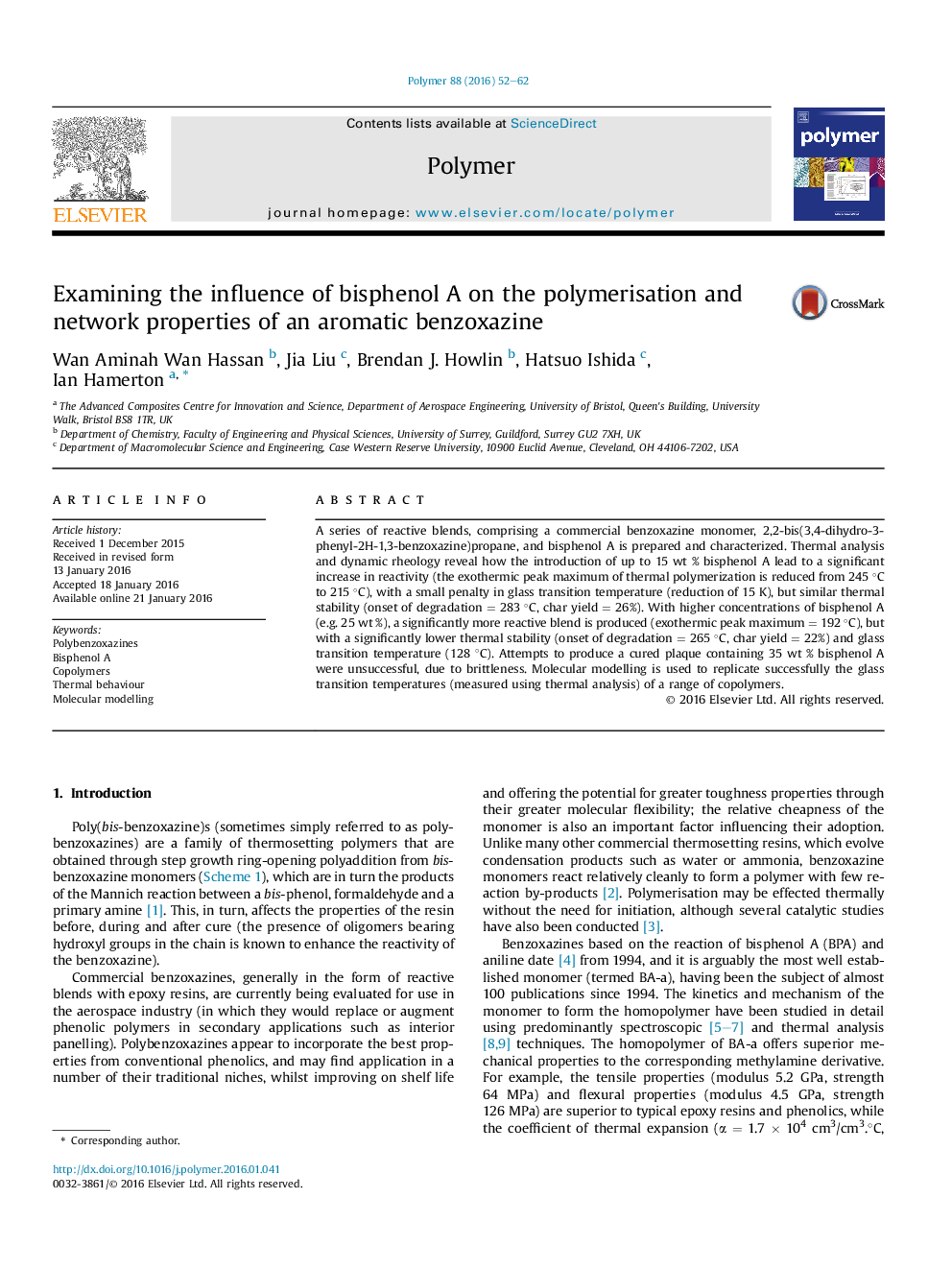| کد مقاله | کد نشریه | سال انتشار | مقاله انگلیسی | نسخه تمام متن |
|---|---|---|---|---|
| 5179593 | 1502518 | 2016 | 11 صفحه PDF | دانلود رایگان |

- First report of copolymers formed from benzoxazines and bisphenol A.
- Very good agreement between simulation and empirical thermal data.
- Spectral suggests different cured polymer network as the BPA content increases.
- Only 5Â wt % bisphenol A significantly reduces onset of cure reaction and gel time.
A series of reactive blends, comprising a commercial benzoxazine monomer, 2,2-bis(3,4-dihydro-3-phenyl-2H-1,3-benzoxazine)propane, and bisphenol A is prepared and characterized. Thermal analysis and dynamic rheology reveal how the introduction of up to 15 wt % bisphenol A lead to a significant increase in reactivity (the exothermic peak maximum of thermal polymerization is reduced from 245 °C to 215 °C), with a small penalty in glass transition temperature (reduction of 15 K), but similar thermal stability (onset of degradation = 283 °C, char yield = 26%). With higher concentrations of bisphenol A (e.g. 25 wt %), a significantly more reactive blend is produced (exothermic peak maximum = 192 °C), but with a significantly lower thermal stability (onset of degradation = 265 °C, char yield = 22%) and glass transition temperature (128 °C). Attempts to produce a cured plaque containing 35 wt % bisphenol A were unsuccessful, due to brittleness. Molecular modelling is used to replicate successfully the glass transition temperatures (measured using thermal analysis) of a range of copolymers.
492
Journal: Polymer - Volume 88, 6 April 2016, Pages 52-62